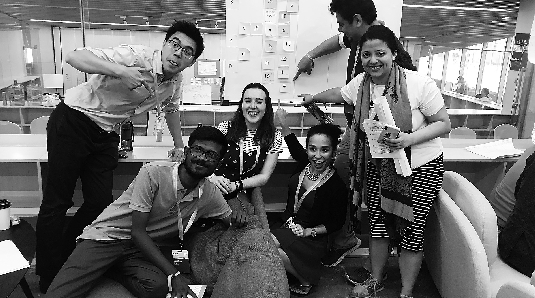
Yu Yuanfan aimee3031@126.com THE 20 teams based in Vanke Design Commune in Nanshan District began making attempts to pass the first gate check to move from the problem-framing stage to ideation Friday afternoon. These projects target different sub-themes of Sustainable Cities and Communities, the 11th goal of the United Nations’ SDGs, and share one common view: scalability is essential. Team Dhakasa aims to improve the living conditions of garment workers in Dhaka, the capital city of Bangladesh. Many of these workers live in extremely narrow spaces in slums. “Bangladesh is the world’s second-largest garment-producing country. There are 4.5 million garment workers and around 4,000 garment factories in Dhaka alone. That means many Fatemas [the example user of this project] are living in slums,” said Tanjila Mazumder Drishti at the gate check. The huge user group in this city alone makes the issue worth tackling, but the implications of tackling it could be much broader. “Because there is not just one Fatema, and there is also not just one Dhaka city, this is an issue we’re seeing in cities and countries all around the world,” said another team member Molly Reddy. Team Abilitizers focuses on the inclusion of physically disabled children in Indonesian schools. According to statistics they found, the attendance rate of physically disabled children in the country is only 58 percent, and only 36 percent actually finish their education. “Indonesia is the fourth-largest country by population,” said Mark Balmes, a member of an Indonesia-based social enterprise that aims to increase mobility in the city. “The population being affected is big and the impact could be really amazing.” Just like Team Dhakasa, the team members of Abilitizers hope their solution will have bigger implications. “We’re focusing on a solution for Indonesia, specifically in metropolitan areas, but we hope that our solution, after being adapted a little, can then be scalable to other contexts, like metropolitan areas of other developing countries and the suburban areas of Indonesia,” said Emma Bergmans. Another team member Nikita Shabayev, from Kazakhstan, said he already sees the potential for replicating their project amid the discussion. “I already see that the same picture can get absorbed in Central Asia. We face the same problem. We have the same number of children.” | 
